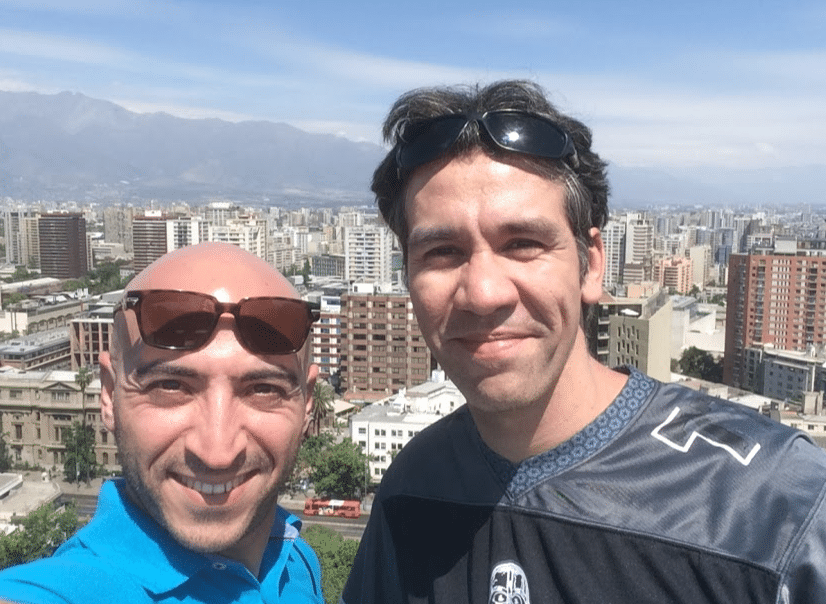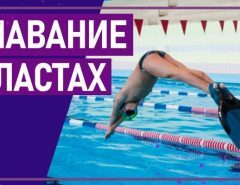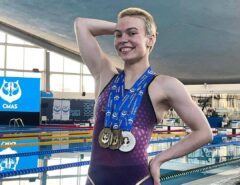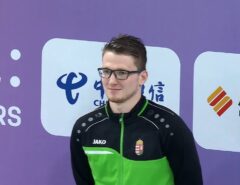When Miguel Cedeño from Venezuela, creator and director of Sportalsub.net visited us in Milan, Italy during the first days of May 2013, wanted to make an interview to me, Davide Manca creator and director of Finswimmer Magazine. We translate here the interview in English and in Italian.
Miguel: Hello Davide, I want to thank you a lot for having hosted us in your home, in Italy. Tell us your career as finswimmer and when you decided to stop and begin to use your web site to help Finswimming grow?
Davide: First of all, thanks to you for coming here in Italy, I’m very glad to have you in my home, I hope we will be able to meet again. Well about my career, I started about 20 years ago, after practiced classical swimming for many years, until I was 13 years old and since 1995 I was involved in International competitions, until in 2002, when I won the European Gold Medal on 6000mt that it was the top of my career as athlete. I stopped professional finswimming in 2006 now I swim and compete only for fun.
The page Finswimmer was a my own and my trainer Valter Mazzei idea, it was about the year 2000, made firstly as the page of our Club NPS Varedo, since 4 years ago we decided to change it in a general page about Finswimming and Underwater Orienteering news, with the target to find the more infos possible to make our sport more visible.
Miguel: How do you think that your web site has improved the level of popularity of Finswimming in the World, and how much time do you spend on it?
Davide: I think that it didnpt help out of our world. My page is visited by Finswimming, Apnea and Underwater Activities fans and followers, and I think that what we need is a bigger public.
Thanks to a lot of people who collaborate with me from a lot of countries, I can have all these informations. Alone I would not do it very well.
I use to spend about 30 mins to it, in the evening, but it depends, if there are international competitions also 2 or 3 hours during the weekends.
Miguel: How would you like to develop your page in the future?
Davide: I would like to assist every International Finswimming competition to be able to give all the informations on real time like pictures, videos and reports.
Miguel: Since this year you are also Trainer of the Master sector of NPS Varedo, what about?
Davide: My trainer Valter and the Club asked me to take the Master Team once per week. The target is to have again a large number of athletes, as it was in the past, having 20-25 people.
Miguel: Italy has been a good example of the work to be done in finswimming, from children categories to high performance, which has given great results with world champions like Stefano Figini and Cesare Fumarola? What recognition has this sport in your country?
Davide: In Italy there are about 60 clubs and probably more than 1000 athletes, but it is still a very unknown sport, really, if you take a tour of Milan or Rome and ask people on the street if they know finswimming, they would say they do not know the sport.
Miguel: What do you think is lacking in the Federations and organizations involved, to let finswimming definitely to achieve national recognition in each country where it is practiced and globally?
Davide: Federations must use their, and in this case ours, money to involve TV and medias. They must invest resources for promotion.
Miguel: What do you think that finswimming is part of a World Federation with so many different types of sports such as CMAS, you believe that finswimming should be formed into a separate International Federation or structures should be strengthened within this organization?
Davide: I think the problem is not the CMAS, if we see the traditional Watersports are in the same World Federation (FINA) like swimming, synchronized swimming, water polo, diving, are very famous and are in one organization, so I do not think that that’s the problem.
Miguel: What should be changed in the sport as such to make it more accessible and grow?
Davide: I would change the rules on the implements and review costs, as currently there are about 20 different models of monofin, all handmade. A competition monofin can cost 500-600 euros. Also with bathing suits, which can cost 250 euros and may last only one year of life.
ORIGINAL INTERVIEW (in spanish)
Quando Miguel Cedeño dal Venezuela, ideatore e direttore di Sportalsub.net ci ha fatto visita a Milano, Italia durante i primi giorni di maggio 2013, ha voluto fare un’intervista a me, Davide Manca ideatore e direttore di Finswimmer Magazine. Traduciamo qui l’intervista in Inglese e in italiano.
Miguel: Ciao Davide, voglio ringraziarti molto per averci ospitato nella tua casa, in Italia. Raccontaci la tua carriera come atleta e quando hai deciso di interrompere e iniziare a utilizzare il tuo sito web per aiutare il Nuoto Pinnato a crescere?
Davide: Prima di tutto, grazie a te per essere venuto qui in Italia, sono molto felice di averti nella mia casa, spero che saremo in grado di incontrarci di nuovo. Beh la mia carriera, ho iniziato circa 20 anni fa, dopo aver praticato per molti anni il Nuoto Classico, a circa 13 anni e dal 1995 ho iniziato a partecipare alle manifestazioni internazionali, fino a quando nel 2002, ho vinto la medaglia d’oro europea sul 6000mt. Quello è stato il top della mia carriera di atleta. Ho smesso il nuoto pinnato professionista nel 2006, ora nuoto e gareggio qualche volta solo per divertimento.
La pagina Finswimmer è stata un’idea mia e del mio allenatore Valter Mazzei, era circa il 2000, prima come sito del nostro Club NPS Varedo, da 4 anni cambiata in una pagina generale sul Nuoto Pinnato e Orientamento Subacqueo, con l’obiettivo di trovare più informazioni possibili per rendere il nostro sport più visibile.
Miguel: Come pensi che il tuo sito web abbia migliorato il livello di popolarità di Nuoto Pinnato nel mondo, e quanto tempo ci passi?
Davide: Io penso che il mio sito non vada al di fuori del nostro mondo. La mia pagina è visitata da fan di Nuoto Pinnato, apnea e attività subacquee, e penso che abbiamo bisogno di un pubblico più grande. Grazie ad un sacco di persone che collaborano con me da molti paesi diversi, posso avere tutte queste informazioni. Da solo non sarei riuscito a fare nulla di ciò. Di solito se devo aggiornarlo ci passo circa 30 minuti al giorno, di sera, ma dipende, se ci sono gare internazionali anche 2 o 3 ore durante il fine settimana.
Miguel: Come ti piacerebbe sviluppare Finswimmer Magazine in futuro?
Davide: Vorrei assistere ad ogni competizione internazionale di Nuoto Pinnato per essere in grado di dare tutte le informazioni in tempo reale come le foto, i video e i report.
Miguel: Mi è giunta voce che sei anche allenatore part time della Club NPS Varedo Master…che dire?
Davide: Il mio allenatore Valter e il Club mi ha chiesto di prendere in mano il Team Master una volta alla settimana. L’obiettivo è di avere di nuovo un gran numero di atleti, come lo era in passato, 20-25 persone.
Miguel: l’Italia è stata un buon esempio del lavoro da fare nel nuoto pinnato, dai bambini alle categorie ad alto rendimento, che ha dato grandi risultati con campioni del mondo come Stefano Figini e Cesare Fumarola? Che riconoscimento ha questo sport nel suo paese?
Davide:In Italia ci sono circa 60 club e, probabilmente, più di 1000 atleti, ma è ancora uno sport molto sconosciuto, in realtà, se cammini per le strade di Milano o Roma e chiedi alla gente se conoscono il nuoto pinnato ti guaderebbero tutti con aria spaesata.
Miguel: Cosa pensi che manca alle Federazioni e alle organizzazioni coinvolte, per far sì che il nuoto pinnato ottenga un riconoscimento nazionale in ogni paese in cui viene praticato?
Davide: Le Federazioni devono usare i loro, e in questo caso i nostri, soldi per coinvolgere TV e media. Devono investire risorse per la promozione.
Miguel: Cosa pensi del fatto che il Nuoto Pinnato è parte di una Federazione Mondiale con tanti diversi tipi di sport come nella CMAS, o credi che il Nuoto Pinnato debba essere messo in una Federazione Internazionale separata oppure è meglio rafforzarlo all’interno dell’organizzazione attuale?
Davide: Credo che il problema non sia la CMAS, se prendiamo in considerazione gli Sport acquatici tradizionali che sono nella stessa Federazione Mondiale (FINA), come il nuoto, nuoto sincronizzato, pallanuoto, tuffi, sono molto famosi e sono in una organizzazione unica, per cui non credo che sia questo il problema.
Miguel: Cosa dovrebbe essere cambiato in questo sport per renderlo più accessibile e farlo crescere?
Davide: Vorrei cambiare le regole sull’attrezzatura e i loro costi, come sapete esistono più di 20 diversi modelli di monopinne, tutti fatti a mano. Una monopinna da gara può costare 500-600 euro. Anche i costumi, che possono arrivare anche a 250 € durare solo un anno di vita.
INTERVISTA ORIGINALE (in spagnolo)





